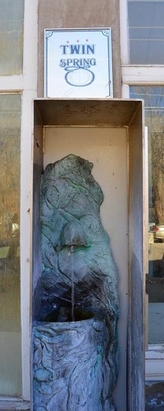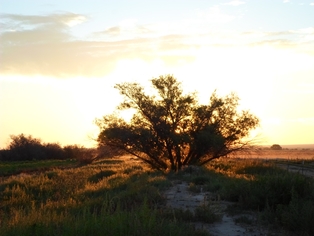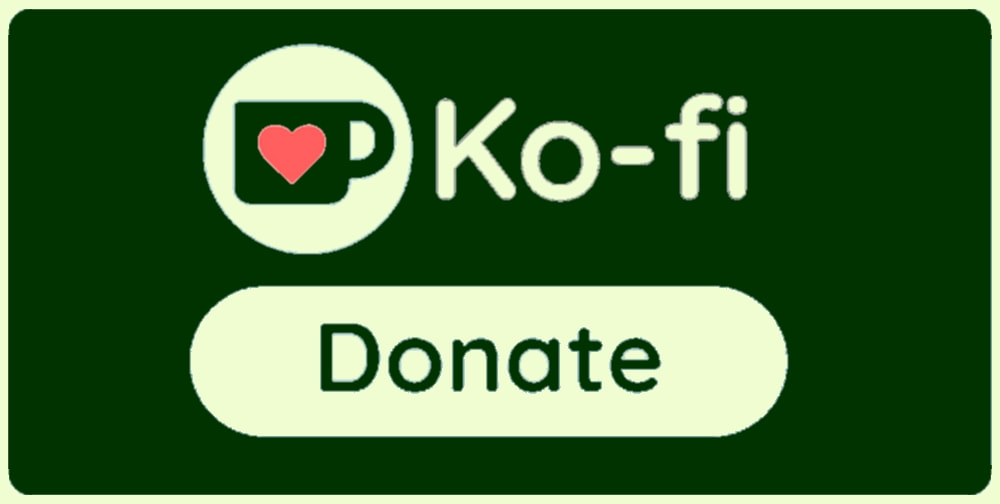Although I remembered to take the jars, I forgot my camera, so the gallery of photos below are not mine. They are from other people's blogs and articles, or from the website of the local Mineral Springs Foundation, who produce a free brochure, including photos, a map, and an analysis of the mineral content or each spring. They have done good work in renovating and decorating many of the springs around the town, inviting a number of artists and sculptors to design fonts. The result is a great deal of variation in the ambiance of the different springs.
Back home in Scotland the "places of interest" seem to be so thick on the ground that you are tripping over them. Lots of wells and springs, ancient monuments and places of natural beauty. To me, it feels very easy to find places that help me to feel close to the gods, to the spirits of nature or people of the past. Yes, the trees and rocks and soil are sacred everywhere, but I feel less resonance here. I hoped that these springs might be a good place to feel something like that, but I'm not sure.
The town of Manitou happened to be rather busy when we visited, with some sort of festival going on. There was a very friendly and slightly crowded atmosphere, which I enjoyed, but it wasn't conducive to quiet moments of spirituality. At each spring we visited we ended up chatting to people. A few were locals, getting water from their favourite spring, and happy to tell us about its benefits. Most were other people "doing the tour", but hardly anyone liked the taste of the water. Except me. I thought some of it was excellent. Each spring varies quite a bit in its mineral make up, but most of them are naturally carbonated, and have a high mineral content, which I enjoyed. One or two would take some getting used to. Iron Spring, for example is rather salty tasting and with its high iron content, reminded me of the taste of blood. I particularly liked the taste of the water from Wheeler Spring, which was fizzy and refreshing, and has a more traditional style of font, too.
It must be the Druid in me, but I found people's jokes and face pulling about the taste of the water a bit frustrating. I find the stuff that comes out of many a household tap completely disgusting. I don't like many mainstream commercial beverages, either. What the earth was offering, via these springs, tasted so much better to me, but people seem to me to have lost their discernment. Too much soda-pop and Miller Lite, I guess. Visiting the springs was just a box to tick, and a funny story about how bad it tasted to be told later.
I haven't delved too deeply into the history of Manitou Springs. Manitou means "spirit" in the Algonquin languages. Spirit both in the sense of what we might call gods and of the spirits that inhabit all things in the animistic sense. Several local plains tribes, such as the Cheyenne and Arapahoe peoples, held the area as particularly sacred and knew that the waters had healing powers. Because of the high mineral content of the water, some of the springs had formed natural mineral basins which were ideal for bathing. When European explorers found the area they quickly began to develop it as a spa, with great emphasis put on its healing potential and romantic associations with the local tribes. These settlers, too, valued the water, and the beauty of the area, but had rather different ideas about what was sacred.
Over the course of the 20th century the "spa" concept gradually gave way to a more general type of commercial tourism. The area has many tourist attractions, including Pikes Peak and the Garden of the Gods, and the springs at Manitou became a minor sideline which I don't even remember hearing mentioned. Manitou Springs became known for its enormous amusement arcade, cog railway and vast selection of motels.
Looking at the photos of Soda Spring, below, in 1870 and the present, I know which I prefer. However, I'm glad that perhaps something of the dignity and original reverence for the springs has been revived by the Mineral Springs Foundation. Water in Colorado is rarely a source of peace. It is generally seen as a scarce commodity, bought and sold for unsustainable agriculture, use by growing cities and for sporting and recreation. The saying "Whisky's for drinking, water's for fighting" refers to the legal wrangling that is almost always ongoing over water, somewhere in the state. Yet holy wells and holy water have gone unnoticed...
Because the town was built around the springs, most of them are along the main street or along major traffic arteries. The atmosphere when we visited this time, while pleasant, wasn't great for, say, a few moments of meditation. I would like to go back on a weekday in the off season, and see how it is then.
If you enjoyed this article, you might also like The Divine Connection of Water and Mother Nepesta.



























 RSS Feed
RSS Feed




